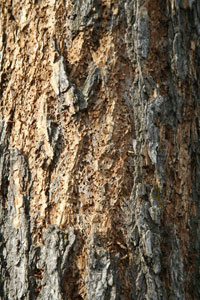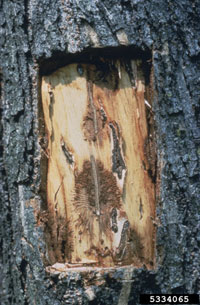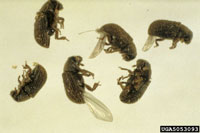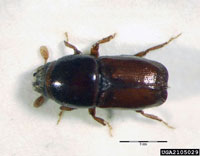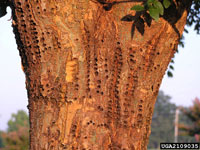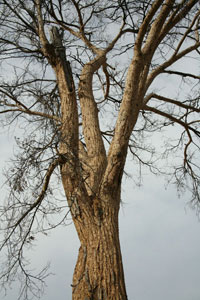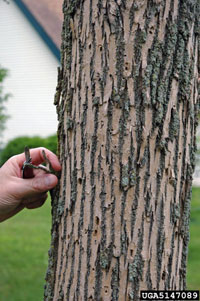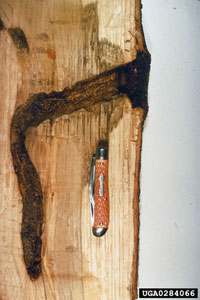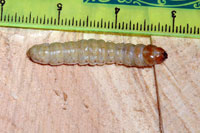Extension > Garden > Diagnose a problem > What's wrong with my plant? > Deciduous Trees > Elm > Holes in trunk or branches
Elm > Trunk/Branches > Holes in trunk or branches
1 of 4
Native elm bark beetle
Hylurgopinus rufipes
- Egg galleries extend against grain, noticeable when bark is removed
- Little or no damage to tree unless beetle is carrying Dutch elm disease fungal spores
- Adults are 3/32 inch long; brownish black
- All elm species in Minnesota are attacked
- More information on Native elm bark beetle
2 of 4
European elm bark beetle
Scolytus multistriatus
- Feed at the twig crotches, girdle the bark, cause small branches to fall off
- Egg galleries extend with the grain, noticeable when bark is removed
- Little or no damage to tree unless beetle is carrying Dutch elm disease fungal spores
- Adults are 1/8 inch long; shiny, dark reddish brown to black
- All elm species in Minnesota are attacked
- More information on European elm bark beetle
3 of 4
Woodpeckers
- Holes are round and range in size from 1/4 to 1/2 inch
- Larger holes, 1 1/2 or more inches may be nesting holes and suggest softer heartwood inside the tree
- Bark often removed around holes
- Woodpecker probing may indicate presence of wood boring insects under bark
- Repetitive tapping or drumming heard
- Birds of varying black and white patterns, often with some red, seen tapping on trees
- More information on Woodpeckers
4 of 4
Carpenterworms
Prionoxystus robiniae
- Exit holes in wood are round and large, about 1/2 inches
- Galleries start in sapwood, eventually entering heartwood
- Large amount of sawdust in piles present at trunk base
- Stout bodied moths, black and light gray mottled forewings as large as 2 1/2 to 3 inches
- Yellowish white caterpillars with brown heads; 2 to 3 inches long
- More information on Carpenterworms



